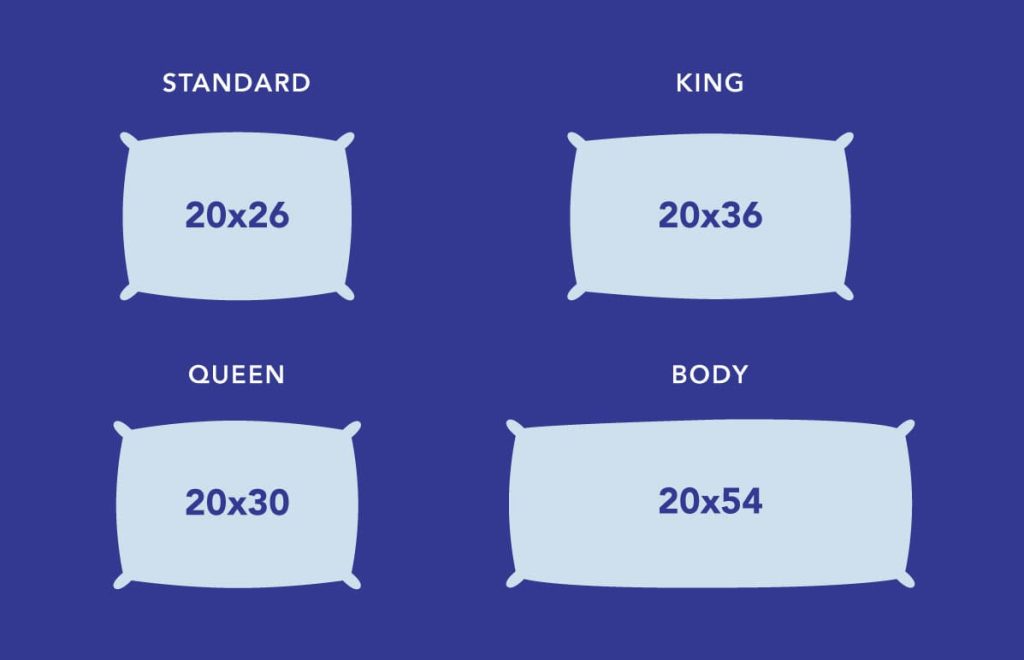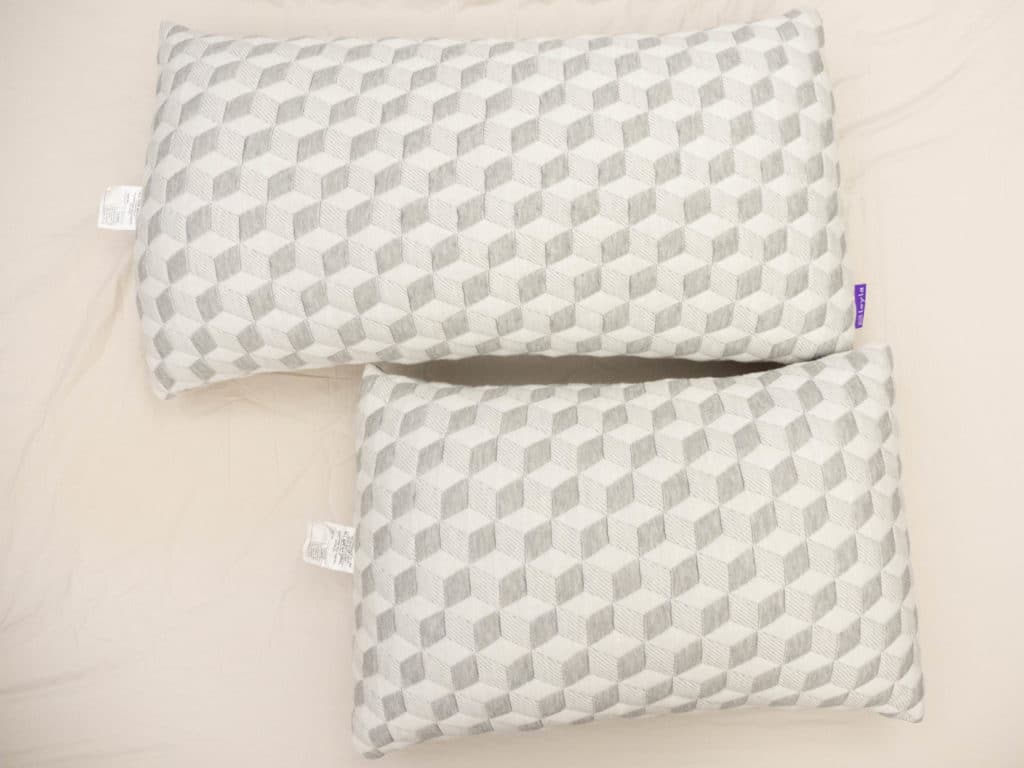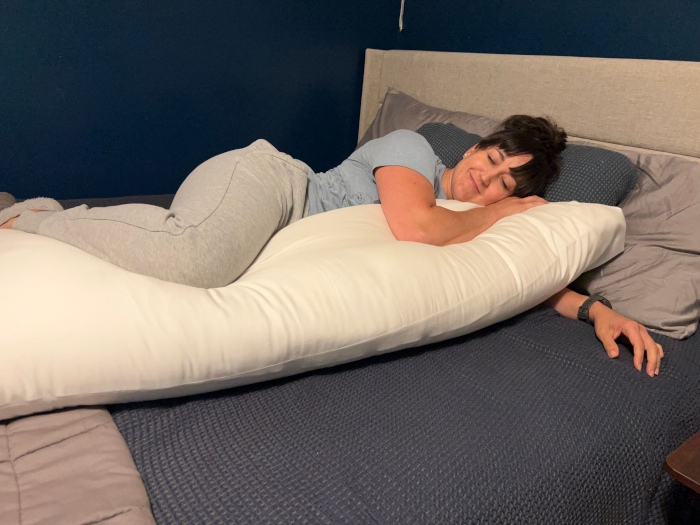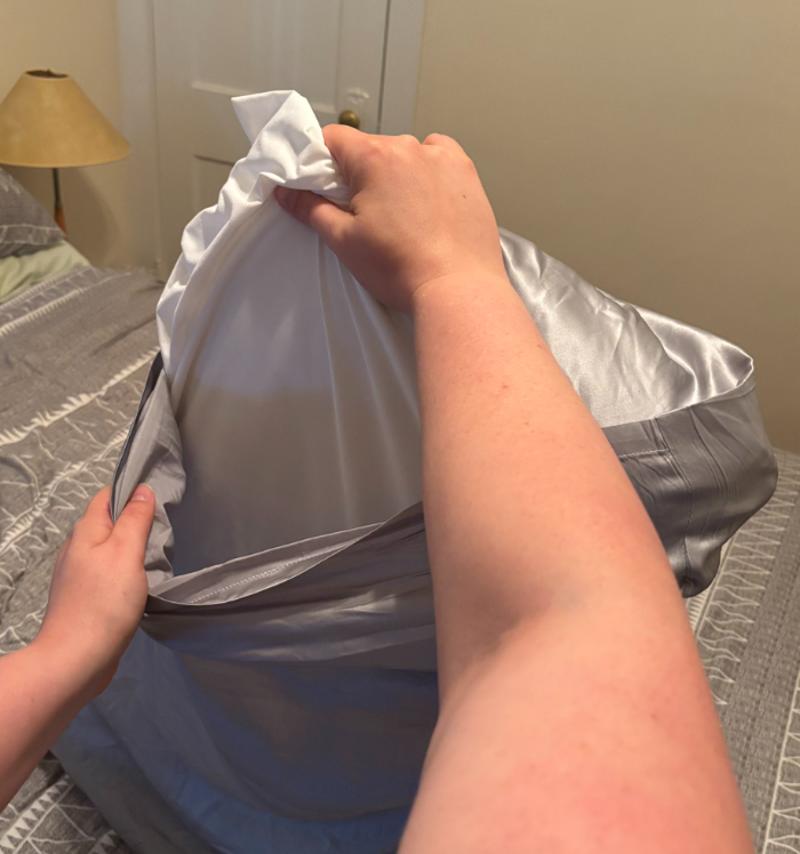Sure, sleeping on the best mattress is a major factor when it comes to getting a good night’s sleep, but how much thought have you given to your pillow situation lately?
Putting your head on the perfect pillow each night often means you’ll wake up feeling refreshed, rejuvenated, and ready to face your day — while sleeping on something worse for wear may leave you with daytime drowsiness and nagging neck pain1. If your pillow has seen better days, it may be time to buy something new and start getting better sleep quality pronto.
But, with so many different pillow sizes and types of pillows on the market, how do you know you’re going to wind up with something well-suited for your sleep needs?
No worries, sleep fam. Our Best Pillow Sizes guide saves you from the analysis paralysis by answering all the most common questions, including what pillow sizes work with your mattress size, what pillowcase size to buy, and how to figure out what might be the best choice for you.
Standard Pillow Sizes Explained

Let’s kick things off with a quick rundown of the most common pillow dimensions, so you don’t look any more lost in the HomeGoods pillow section than you already feel.
| Pillow Size | Dimensions (inches) | Fits These Bed Sizes |
| Standard | 20 x 26 | Twin, Twin XL, Full |
| Super Standard | 20 x 28 | Twin to Queen |
| Queen | 20 x 30 | Queen |
| King | 20 x 36 | King, California King |
| Euro | 26 x 26 | All sizes (decorative/accent) |
| Body | 20 x 54 (or longer) | Full, Queen, King |
Some of the above may seem intuitive — like, who would’ve guessed the king-size pillow works best with a king-size bed — but it’s worth it to clarify before we dive deeper. So, when in doubt, consult the product packaging or our handy-dandy guide above.
How to Choose the Right Pillow Size
You can make an informed purchase using our above Pillow Size Chart, but we’re going to take it one step further and break down the most common ways of choosing the right pillow for you.

Based on Bed Size
The most common way of choosing the right pillow size is by basing your choice on the size of your bed. It makes sense, proportionally speaking, that smaller pillows would work best with the smaller bed sizes, namely twin beds, twin XLs, and full sizes, while larger pillows give greater coverage for your big bruiser type beds, specifically queens, kings, and California kings.
You can choose to customize your pillow situation as you see fit, but here are a few quick recs to help you realize your vision:
- Twin/twin XL: One standard or super standard pillow
- Full: Two standard or super standard pillows
- Queen: Two super standard or queen-size pillows
- King/California king: Two king pillows
Based on Sleeping Position
Basing your decision on bed size gives you the right pillow in terms of size or aesthetics, but what about functionality?
If you’re the type to put function over appearance, consider your sleeping position before you make your purchasing decision:
- Back sleepers: Standard and queen-size pillows are often the best pillows for back sleepers because they provide support without propping your head too high.
- Side sleepers: A slightly longer pillow, like a queen or king, may help keep your neck aligned and prevent shoulder drop.
- Stomach sleepers: Smaller, flatter pillows, like standard pillows, give you a touch of cushiness without cranking your neck backwards and leaving you with lingering pain.
Based on Body Size
Your bed and sleeping position aren’t the only factors to consider here. You’re just as important, especially your body size. You want a pillow that is proportionate to you, not just your bed.
Taller or broader sleepers may prefer the extra length of a queen or king pillow, even if they’re sleeping on a full-size mattress. On the flipside, sleepers with smaller frames may find that a standard pillow works perfectly, even though they’re practically swimming in the center of a California king each evening.
Remember: The “rules” of choosing the perfect pillow are helpful guidelines, but your comfort is always the most important factor to consider when making the right choice.
Specialty Pillow Sizes

Our cheatsheet covers the most common pillow sizes — and, therefore, the ones you’re probably going to buy by default whenever it’s time to replace your pillow — but you know how it is today. Every time you turn around, there’s something new available being marketed as a revolutionary alternative to all the tried-and-true options we discussed earlier.
Never fear, Sleepopolis is here. Here are a few speciality pillows that have come into fashion over the years:
- Body pillows: They’re big, they’re long, and they’re great for side sleepers, pregnant sleepers, or anyone who loves a full-body hug while they snooze.
- Lumbar pillows: These small, rectangular pillows are perfect for lower back support. Gently place them in the natural curve of your lower back for some additional support.
- Orthopedic pillows: Similar to lumbar pillows, orthopedic pillows are contoured and/or shaped to help with neck, shoulder, or spinal alignment.
- Travel pillows: Usually U-shaped and meant for use in planes, trains, and automobiles. Pro tip — the opening of your travel pillow should go behind your head so that your chin can comfortably rest on the cushion. The more you know!
- Decorative pillows: Some pillows are not sleeping pillows and instead meant to be used as home decor. We’re talking throw pillows, square pillows, and even Euro pillows to some degree. While you can technically sleep on them, you’ll probably be comfier if you remove them before you lie down for sleep.
Pillow Size vs. Pillowcase Fit

We want your pillow and pillowcase to have a good relationship with each other; that is to say your pillowcase should be snug, supportive, and not super complicated.
It’s important to get the pillowcase sizing right. Go too small and your pillow may feel overstuffed and firm; go too large and your pillow may shift around while you’re trying to catch Zzzs. The extra fabric may also fold and leave a lasting impression on your face in the morning—literally!
To avoid these common pitfalls, try matching the pillow size to the pillowcase size, i.e. buying a standard pillowcase for your standard pillow, queen pillowcase for your queen pillow, and so on and so forth. There may be some negligible discrepancies depending on what brand you pick, but it’s generally a good way of guaranteeing a good or perfect pillowcase fit.
Frequently Asked Questions
What size pillows go on a queen bed?
Generally speaking, two queen-size pillows will provide the proper coverage for your queen bed, but you can use super standards in a pinch for a similar effect.
Can you use king pillows on a queen bed?
They won’t cart you off to jail if you choose to use king-size pillows on your queen bed, but your bed may not have that perfect, polished appearance some people prefer. King-size pillows may hang off the edges, so this choice ultimately comes down to your personal preferences.
Do pillow sizes affect neck support?
Pillow size and height absolutely affect neck support.
In fact, a 2024 study published in Sleep & Breathing2 concluded that “varying pillow heights are linked to neck muscle activity and sleep comfort,” which may ultimately impact the health of your cervical spine and your ability to get restful sleep.
It’s not just about the look; your pillow size, shape, and height can impact your health, too.
What’s the difference between standard and super standard pillows?
Super standard pillows give you an extra two inches in length, making them a great option for sleepers who want a little extra size without stepping up to a queen-size pillow.
Conclusion
It doesn’t matter if you prefer a plethora of bed pillows placed against your headboard or you’re a pillow minimalist who likes one all-important pillow to lay your head on each evening, getting the right pillow size is important when it comes to promoting high sleep quality.
So, whether you have memory foam, down pillows, down alternative, or something else entirely, you’ll want to make sure your pillow size works for your bed size, body size, or sleeping position.
Our above guide is designed to simplify the process of picking and purchasing the right pillow size, so follow our tips and you’re sure to wind up with the best pillow for your sleep needs.
References
1. Lei JX, Yang PF, Yang AL, Gong YF, Shang P, Yuan XC. Ergonomic Consideration in Pillow Height Determinants and Evaluation. Healthcare (Basel). 2021;9(10):1333. Published 2021 Oct 7. doi:10.3390/healthcare9101333
2. Jiao R, Xiao W, Wang M, Yu S, Li H. The impact of pillow height on neck muscle activity: a pilot study. Sleep Breath. 2024;29(1):40. Published 2024 Dec 3. doi:10.1007/s11325-024-03219-6



























